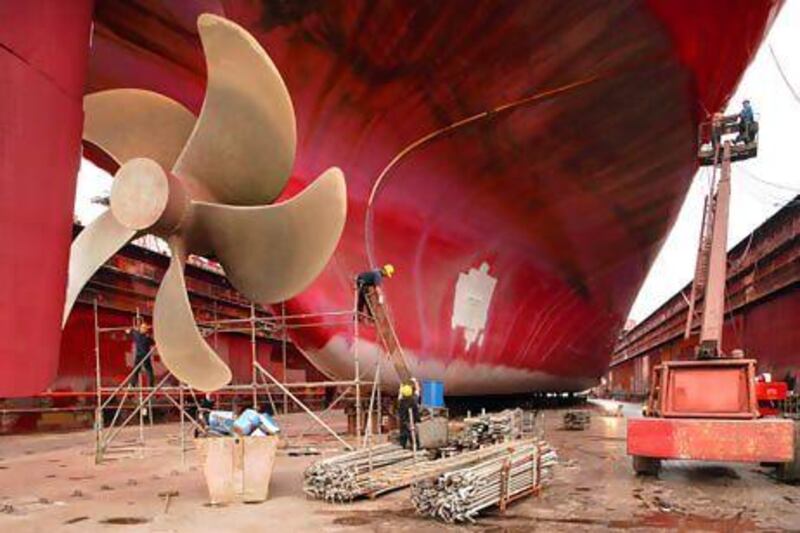Up to 45 per cent of global shipyards will have no orders to work on at year-end, according to research by analysts at Deutsche Bank, carried out for the world's biggest shipbuilder, Hyundai Heavy Industries.
The work, published in the latest edition of the South Korean industrial giant's journal, New Horizons, also shows that global commercial ship orders were down 48 per cent year on year, in the first nine months of this year and the order backlog fell to half of the level of the first half of 2008.
Global shipbuilding has been going through a downturn for the past four years, said the research, with the downturn being felt more in the commercial shipbuilding industry, where demand is driven by fixed asset investments and growth in global trade.
"At this point all lead sector indicators such as freight rates, ship prices, used ship transactions, and used ship prices suggest that commercial shipbuilding demand is unlikely to recover much in 2013 as the sector continues to suffer from oversupply, a weak financing market, and low freight rates," said Sanjeev Rana, a Deutsche Bank analyst.
"For the small shipyards, the painful industry restructuring that started in 2010 is expected to continue as shipyards struggle with lack of orders and tight financing.
"Despite very low ship prices, shipowners expect prices to fall further due to competition among yards as 45 per cent of global shipyards have no orders to work on post-2012.
"This means the finances of small shipyards are likely to deteriorate further and banks might be unwilling to issue refund guarantees to them, starting a negative feedback cycle."
The number of active yards globally has also declined 44 per cent in the past four years, according to separate research by Clarksons. However, the London-based international ship broker believes further consolidation will be needed before any meaningful recovery in ship prices can begin.
Clarksons, which constantly monitors the shipping industry, has produced figures which show that ship prices have fallen 35 to 40 per cent from the peak and the brokers' new-building price index, down 8 per cent this year, has fallen back to levels not reached since early 2004.
The continued weakness in freight rates, financial markets, declining ship prices and expectations of further fuel efficiency improvements for "ecoships" have customers waiting on the sidelines as far as placing new orders is concerned, it has noted.
Nevertheless, strength in selective segments such as in liquefied natural gas (LNG) carriers and offshore should continue to support order flow, although a sustained recovery might take some more time, said Deutsche Bank's Mr Rana.
"By ship type, we expect demand for tankers and bulk carriers to take one to two years to show a meaningful recovery, whereas containerships and LNG carriers, where demand and supply balance is slightly more favourable, could see modest recovery in 2013," he added.
"Offshore orders accounted for 60 per cent of global investment in the shipbuilding sector, equivalent to US$32.5 billion [Dh119.36bn], in the first nine months of this year driven by relatively high oil prices and daily rental rate for rigs."





